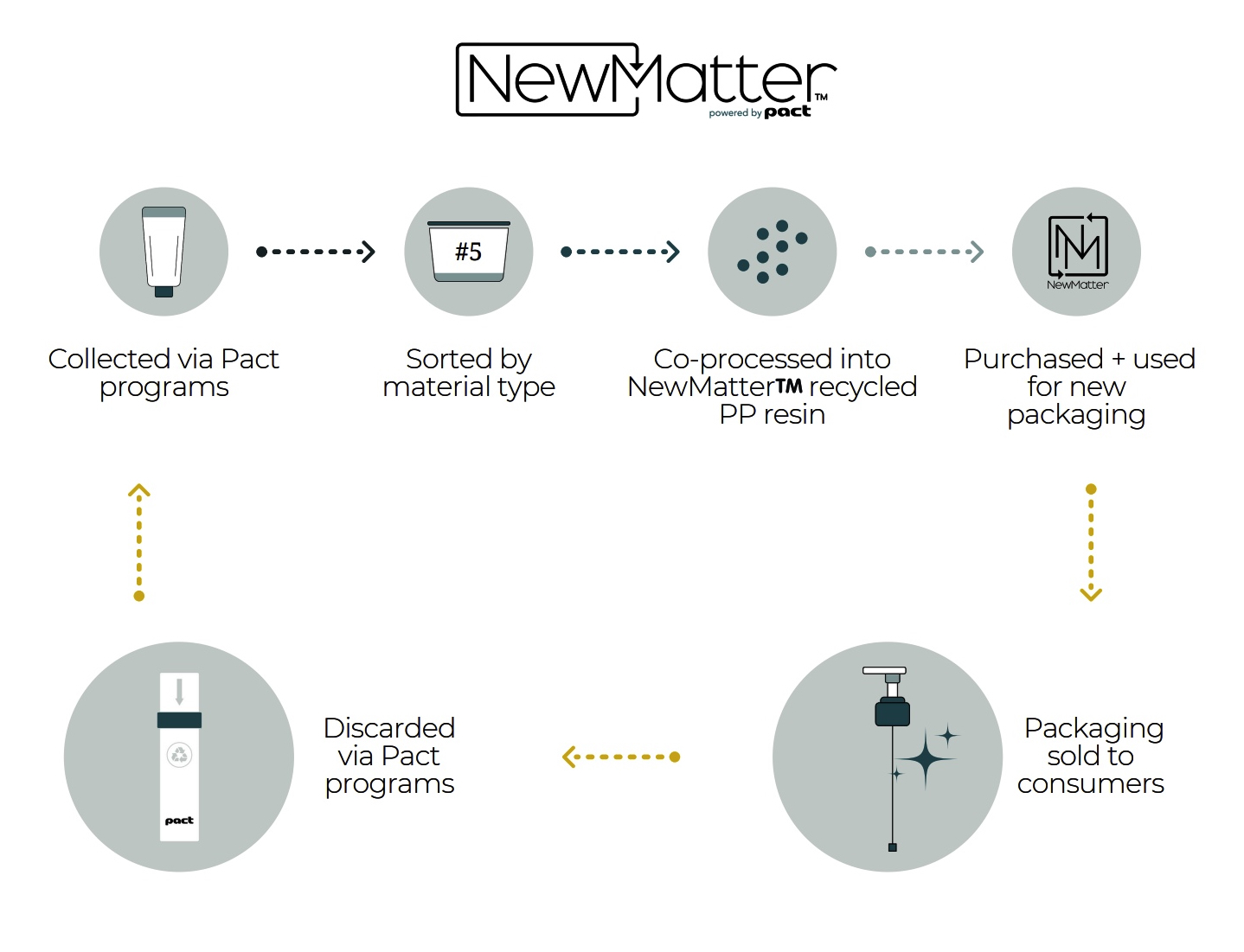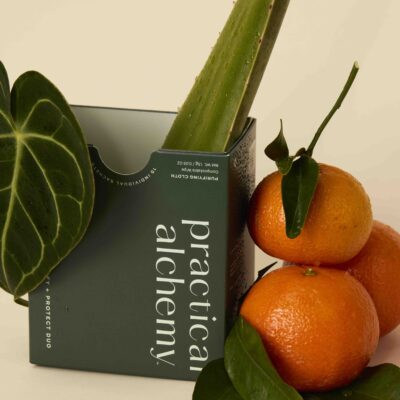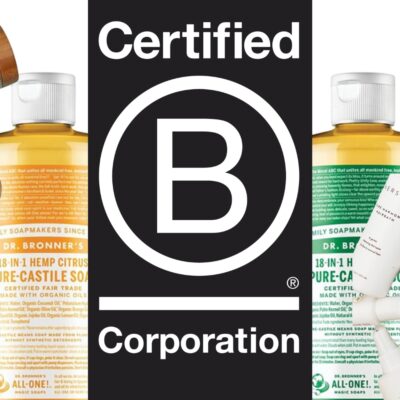
Pact Sees Beauty Shoppers Recycle Nearly 2.6X More Last Year
After beauty product recycling through Pact declined in 2023, the tide of beauty waste turned last year, when the nonprofit saw both consumer engagement and the volume of beauty product empties it collected from consumers multiply nearly 2.6X.
In its latest annual impact report, Pact, the nonprofit that recycles beauty packaging waste, attributes the increases to growing awareness and educational initiatives like live and video trainings, quarterly store employee feedback surveys, social media posts and in-store signage. Its bins, where beauty shoppers can throw used and cleaned out beauty products, are available at over 3,300 stores, including at Sephora, Ulta Beauty, Credo, Nordstrom and L’Occitane, and 545,912 beauty customers engaged with them last year, up from 210,266 the year before based on surveys.
Carly Snider, executive director of Pact, says beauty consumers “want to know why this program exists, what is happening to the material once it goes into the bin, and why they should take the extra steps to do this. We provide that so that they feel confident that, hey, this material isn’t just going to the landfill. There’s so much distrust with recycling.”

There’s distrust in recycling for good reason. Estimates of the percentage of plastic recycled in the United States hover around 5% to 10%. While 43% of American households recycle, most of the plastic they recycle heads to landfills, although paper, cardboard and aluminum have much higher recycling rates of over 50%.
Snider eases consumers’ minds about where their empties placed in Pact bins end up by pointing out the organization’s recycling rates outperform most material recovery facilities in the country. Last year, Pact collected 227,000-plus pounds of beauty materials. That amount included 138,673 pounds from its consumer-facing program, up from 53,412 the previous year, and 88,959 pounds from its beauty business-facing program for obsolete inventory and unsellable goods, up from 19,627 pounds.
Pact discloses that 98% of the paper, glass and metal materials collected through its consumer-facing program have been mechanically recycled. Seventy percent of the sorted, clean plastics have been mechanically recycled. The contamination rate of materials thrown into the bins, meaning trash or bottles with residue that can’t be recycled, is 22%, which is on par with the national average in curbside recycling.
“There’s so much distrust with recycling.”
Even the contaminated materials aren’t headed for landfills. Snider explains they turn into alternatives to traditional concrete for the construction industry or energy. Pact has been working to diminish contamination by adding flaps to bins, redesigning bins to not resemble trash cans and situating them at cash wraps.
Pact’s consumer participation has risen, but it’s nowhere near the millions of Americans buying beauty products. In its report, the nonprofit cites a recent study from marketing solutions firm Quad showing only 10% of sustainably minded consumers use retailer recycling drop-off bins.
“It does require big shifts in behavior,” says Snider. “You don’t just have empties in your purse hanging out. You have to wash out these empties, hang on to them, then think about bringing them to the store.”

To heighten participation, Pact recommends education coupled with incentives. On the education side, along with trainings, signage, social media and feedback surveys, it believes presenting consumers the result of their recycling can be beneficial. Last year, Pact launched NewMatter, a circular suite of products encompassing recycled materials from the products it collects. The materials are in high-density polyethylene (HDPE) soap dishes, HDPE store countertops and polypropylene (PP) pumps.
Credo was the first company to showcase NewMatter’s mono-material pump in its in-house body care range. According to reporting by the publication Glossy, the pumps are constructed from 84% recycled materials. Ocean-bound plastic from Malaysia is combined with recycled materials from the beauty packaging Pact collects to make the pumps. One pound of material is diverted from landfills for every 38 pumps.
Snider says the cost to brands is roughly the equivalent to most similar post-consumer recycled (PCR) pumps on the market, and Pact is in the process of working with three additional companies to use them. Credo teamed up with Roberts Manufacturing to make the pumps. Pact plans to sell its soap dishes soon.
“It does require big shifts in behavior.”
Also on deck is an app due out later this year to help Pact members offer incentives for recycling their finished beauty packaging and monitoring their behavior to learn about their recycling practices. The nonprofit has found its participation rate jump 20% to 25% with incentives. Credo offers 10 rewards points for its customers that recycle a product with it via Pact and 120 rewards points for purchasing a Pact return shipping label.
Snider makes the business case for greater recycling participation. She says that, when people drop off empties at a store, more than half of them purchase at that store. According to research by Remi Trudel, an associate marketing professor at Boston University, and Anna Tari, an adjunct professor at IE Business School, customers familiar with a manufacturer’s take-back program spend almost 5% more with that manufacturer, and their spending climbs almost 6% and 9% on second and third visits, respectively.
Pact has 140 members, up 35 from last year, spanning retailers, brands, suppliers, nonprofit donation partners, media and sustainability organizations, including Ilia, Fenty Beauty, Glow Recipe, Summer Fridays, Sunday Riley and L’Oréal USA. Since its start, Pact has collected over 467,000 pounds of beauty packaging or about 232 tons. Pact charges $500 to $12,500 yearly for membership. Its programs include in-store bins, in-office bins, mail-back shipments and obsolete or unusable packaging collection.

Pact was created in 2021 by Credo and MOB Beauty in response to the limitations of traditional curbside recycling for hard-to-recycle beauty packaging such as caps, pumps and sample containers. As it looks forward, the organization is focused on readying its members for Extended Producer Responsibility (EPR) laws that hold producers accountable for the environmental impacts of their products.
Colorado has passed an EPR that will, for example, require businesses to contribute annually to waste reduction efforts by 2026. In California, the EPR law’s objective is to reduce single-use plastic and improve recyclability by 2032.




